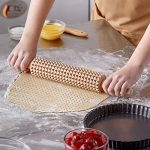Choosing the right rolling pin can transform your baking experience, ensuring perfect dough texture and effortless pastry preparation. Among the most popular options, ceramic and wooden rolling pins stand out for their unique qualities. This comprehensive comparison explores ceramic rolling pin vs wooden rolling pin from multiple perspectives including durability, maintenance, usability, and baking results. By the end, you will clearly understand which rolling pin suits your kitchen style and baking needs.
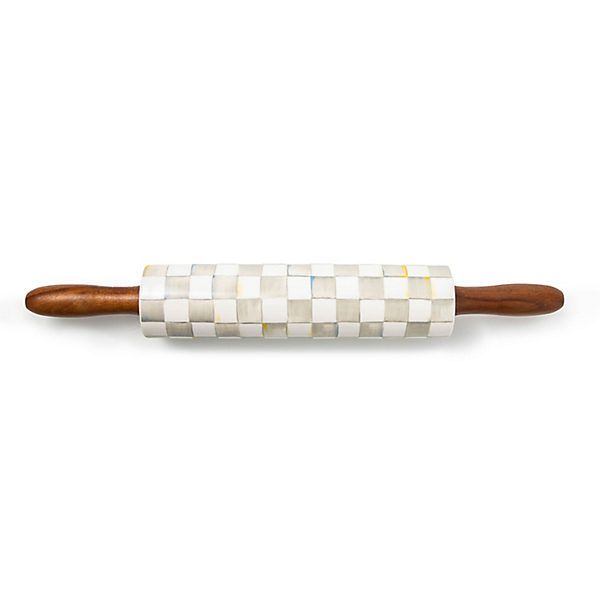
Material and Durability: Ceramic Rolling Pin vs Wooden Rolling Pin
The material composition directly affects a rolling pin’s lifespan and performance. Ceramic rolling pins typically feature a smooth, non-porous surface made from fired clay or porcelain. This surface resists scratches, moisture absorption, and staining, which ensures the pin remains pristine over years of use. Ceramic’s hardness means it withstands heavy pressure without warping or denting, providing consistent rolling performance. However, ceramic can chip or crack if dropped or mishandled, requiring careful storage.
In contrast, wooden rolling pins are crafted from hardwoods such as maple, beech, or birch. Wood offers natural durability and a warm, tactile feel preferred by many traditional bakers. Although wood is robust, it absorbs moisture and oils over time, which can lead to warping, cracking, or harboring bacteria if not maintained properly. Wooden pins may also show dents and scratches from frequent use but can be sanded and refinished. Overall, ceramic excels in long-term durability with less frequent maintenance, but wood offers a resilient and time-tested option when cared for properly.
Maintenance and Cleaning: How Each Rolling Pin Performs
Cleaning and maintenance represent a crucial factor when choosing between a ceramic rolling pin and a wooden one. Ceramic rolling pins have a glazed, non-porous surface that resists dough sticking and moisture absorption. You can easily wash them with warm water and mild detergent, then dry immediately without worrying about damage. The non-absorbent surface also means they don’t retain odors or stains, maintaining hygiene and ease of use in busy kitchens. However, ceramic rolling pins require careful handling during cleaning to avoid accidental chips.
Wooden rolling pins need more attention during cleaning to prolong their lifespan. Because wood is porous, soaking or submerging it in water can cause swelling and cracking. Instead, wooden pins require wiping with a damp cloth or gentle hand washing, followed by thorough drying. Many bakers treat wooden rolling pins with food-safe mineral oil regularly to seal the surface and prevent drying out or cracking. Proper maintenance enhances the wood’s natural resistance and preserves its smoothness. Despite the extra care, many appreciate the tactile warmth and classic aesthetic that wooden rolling pins bring to the kitchen.
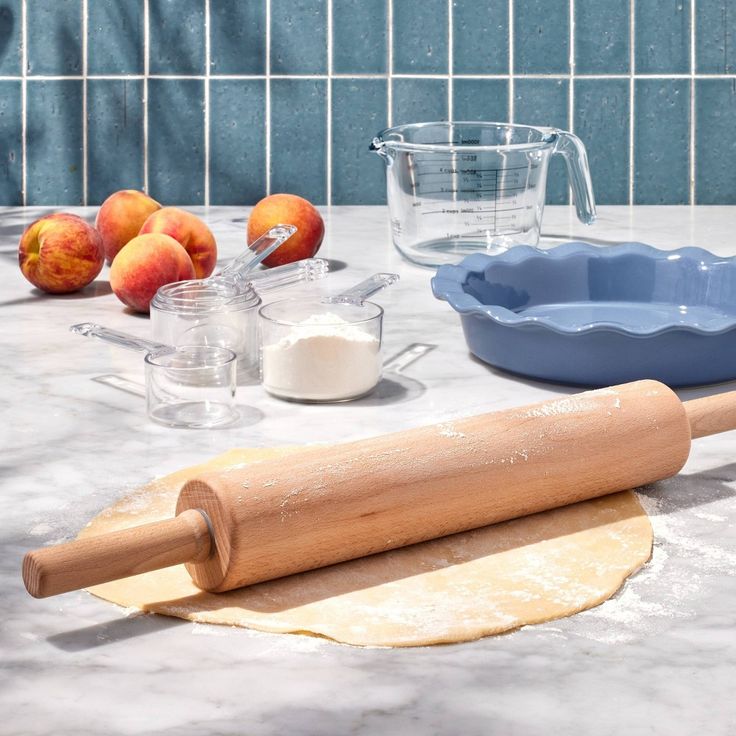
Temperature Control and Dough Handling: Impact on Baking Quality
Temperature plays a subtle but important role when working with rolling pins, especially for delicate doughs like pastry or pie crust. Ceramic rolling pins remain cooler to the touch compared to wood because ceramic conducts and retains cold temperatures well. This cool surface helps keep butter or shortening in the dough from melting prematurely, which is crucial for achieving flaky, tender pastries. Some bakers even chill ceramic rolling pins in the fridge before use to enhance this effect, allowing smoother rolling and less sticking.
Wooden rolling pins do not retain cold as effectively as ceramic, warming quickly in your hands and during dough preparation. While wood’s warmth can be pleasant for some dough types, it may cause dough to become stickier or softer faster, requiring more flour dusting or rest periods. However, wooden pins offer superior grip and control for rolling heavier doughs such as bread or pizza, where temperature control is less critical. Overall, ceramic rolling pins provide an edge in temperature-sensitive baking, while wooden pins excel in versatility for a range of dough textures.
Weight and Balance: User Comfort and Efficiency in Baking
Ergonomics influence the ease of use and control when rolling dough. Ceramic rolling pins tend to be heavier due to their dense material. This extra weight can be an advantage, allowing the dough to flatten more quickly with less effort from the baker. The smooth, even surface of ceramic pins promotes uniform pressure distribution, reducing strain on wrists and hands during prolonged baking sessions. However, the added weight might feel cumbersome for some users, especially beginners or those with limited hand strength.
Wooden rolling pins are generally lighter and provide a natural balance that many bakers find comfortable. The lighter weight allows for more tactile feedback, making it easier to feel dough thickness and texture changes while rolling. Many wooden rolling pins come with handles or tapered designs that enhance grip and maneuverability. This responsiveness makes wooden pins a preferred choice for detailed dough shaping or delicate pastries requiring gentle pressure. Ultimately, ceramic pins suit those who prefer heavy, steady rolling, while wooden pins favor tactile control and precision.

Dough Sticking and Surface Smoothness: Comparing Usability
One of the most frustrating challenges in baking is dough sticking to the rolling pin surface. Ceramic rolling pins feature a hard, glassy finish that naturally reduces dough adhesion. The smooth surface minimizes friction, allowing dough to roll out easily without excessive flour dusting. Bakers often find ceramic pins ideal for sticky doughs such as sugar cookies or fondant, as cleanup also becomes simpler. Despite their smoothness, ceramic pins can feel slippery in hand, so using a slight dusting of flour on the dough is still advisable.
Wooden rolling pins have a naturally textured surface that tends to grip dough more than ceramic. This texture can help control the dough while rolling but increases the likelihood of sticking, especially with wet or high-hydration doughs. Flour dusting becomes necessary to prevent sticking, which can affect dough hydration if overused. Over time, wooden rolling pins may develop small cracks or grooves that exacerbate dough adhesion but can be sanded smooth. Bakers who appreciate the warmth and tradition of wood often accept the trade-off in stickiness for enhanced control.
Aesthetic Appeal and Kitchen Style: Which Rolling Pin Complements Your Space?
Beyond functionality, the visual appeal of a rolling pin contributes to the ambiance of your kitchen and baking rituals. Ceramic rolling pins often come in a variety of colors, glazes, and artistic patterns, adding a modern or artisanal touch to your kitchen. Their glossy finish reflects light and can make a stylish statement on open shelves or countertops. Many contemporary bakers choose ceramic rolling pins as a design element that complements minimalist or colorful kitchen decor.
Wooden rolling pins evoke classic charm and rustic warmth. The natural wood grain, smooth matte finish, and handcrafted look create an inviting, cozy vibe. Wooden rolling pins age beautifully, developing a patina that tells the story of years spent baking family recipes. For kitchens with farmhouse, vintage, or traditional themes, wooden rolling pins blend seamlessly into the decor and inspire nostalgia. Ultimately, your choice between ceramic and wooden rolling pins can reflect both your functional needs and your personal kitchen aesthetic.
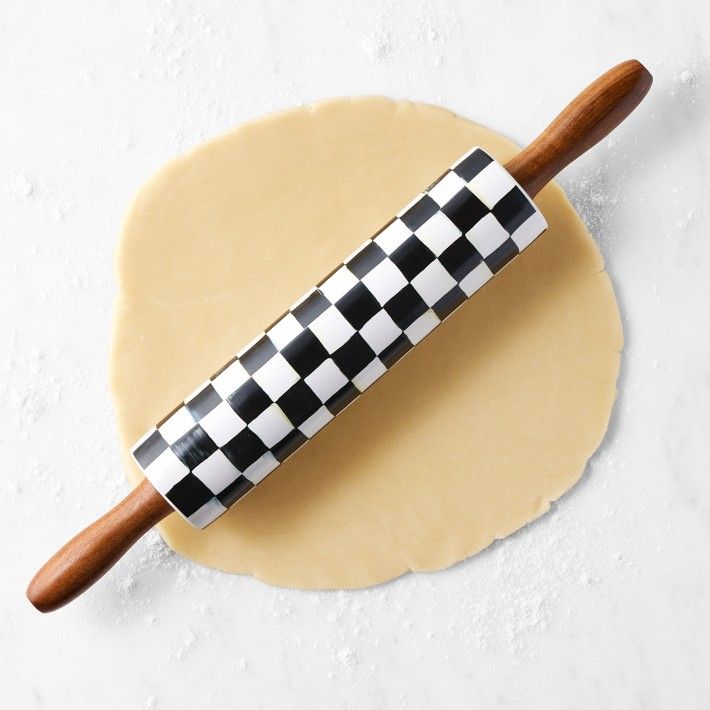
Cost and Availability: Budget Considerations and Market Options
Price and availability often influence purchasing decisions when comparing ceramic rolling pins and wooden rolling pins. Ceramic rolling pins usually fall into a mid to high price range due to the manufacturing process, material quality, and design. Artisanal or hand-painted ceramic pins command premium prices, while mass-produced models offer affordable options. The durability and low maintenance of ceramic rolling pins often justify the initial investment for serious bakers.
Wooden rolling pins tend to be more affordable, with a wide range available from budget-friendly to premium handcrafted options. The abundance of wood types and production styles creates diverse price points accessible to most home bakers. Wooden rolling pins often represent the most economical choice without sacrificing quality or performance. However, additional costs for maintenance products like mineral oil and possible refinishing should factor into the long-term budget. Overall, wooden rolling pins offer excellent value, while ceramic pins provide longevity and style that may warrant a higher price.
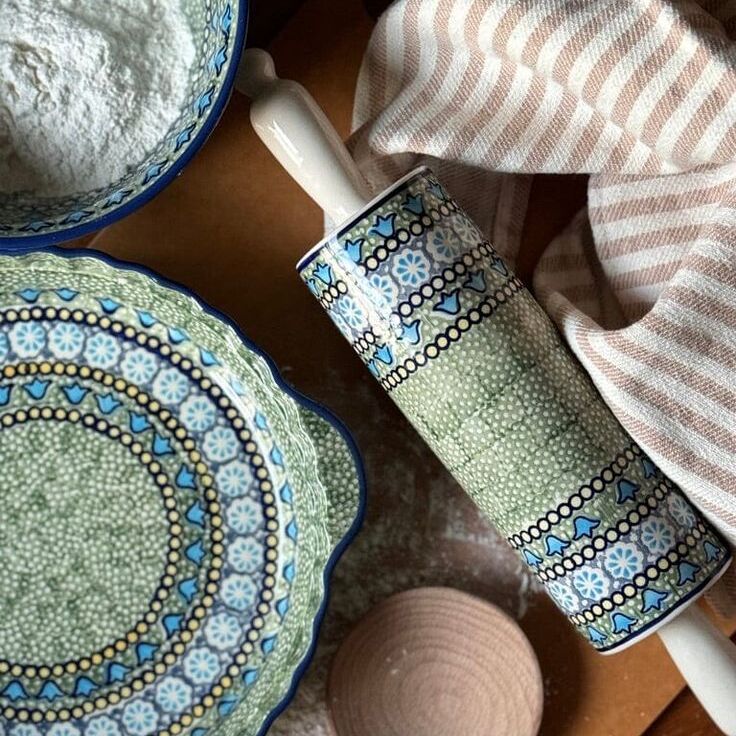
Final Verdict: Which Rolling Pin Suits Your Baking Needs Best?
When deciding between a ceramic rolling pin vs wooden rolling pin, consider your baking style, dough preferences, and kitchen environment. If you prioritize low maintenance, cooler dough handling, and a smooth, non-stick surface, the ceramic rolling pin is the superior choice. Its durability and aesthetic appeal make it a modern baker’s favorite for pastries, cookies, and fondant work.
Conversely, if you appreciate tactile control, traditional warmth, and versatility across dough types, a wooden rolling pin offers unmatched value. The lighter weight and natural texture help with delicate shaping and rolling heavier doughs. With proper care, wooden rolling pins last decades and enrich your baking experience with their timeless character.
Ultimately, both rolling pin types excel in different baking contexts. Some bakers even keep both options on hand, using ceramic pins for temperature-sensitive doughs and wooden pins for everyday tasks. Understanding the distinct advantages of each enables you to make an informed choice that elevates your baking from good to exceptional.
